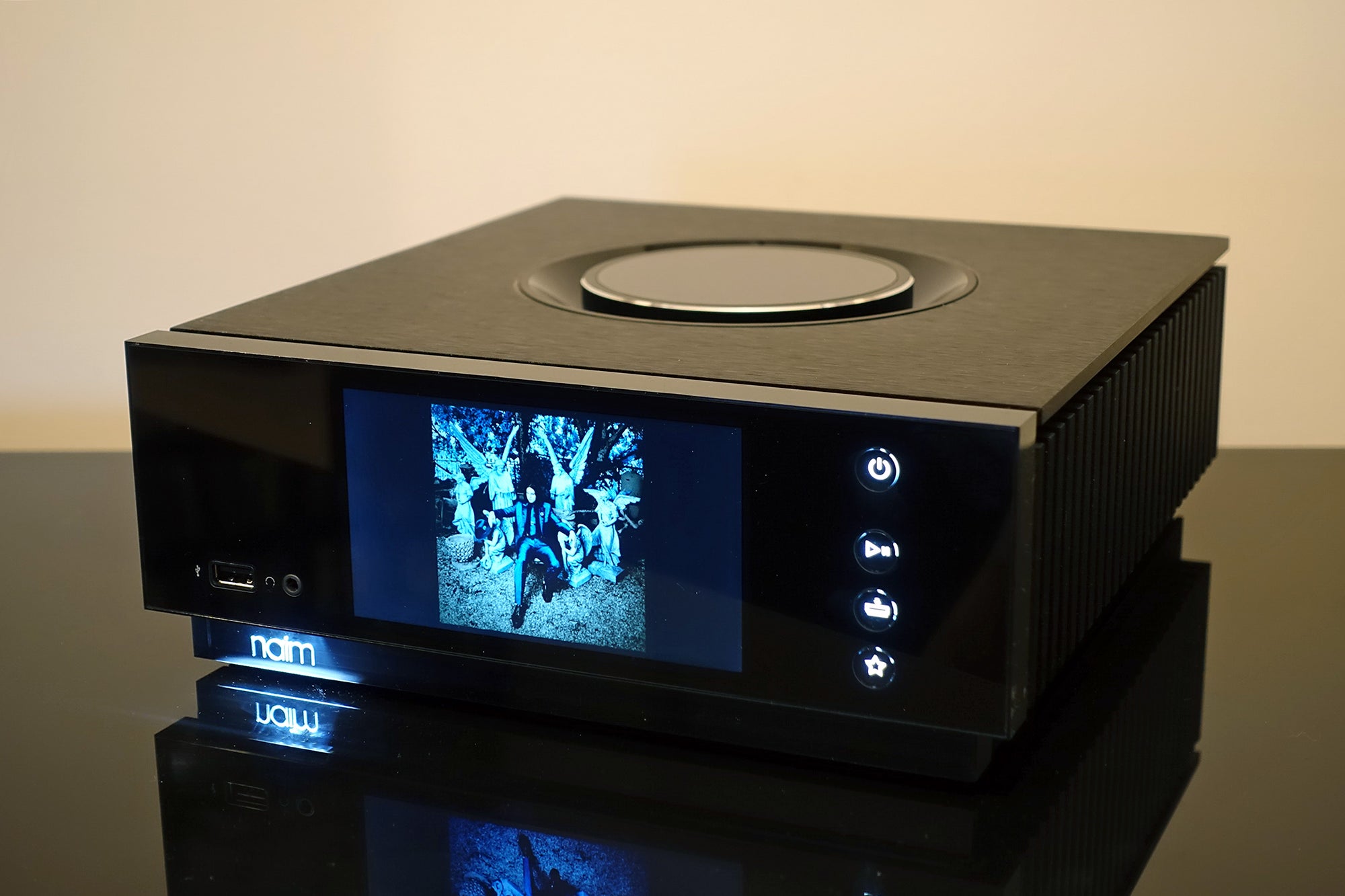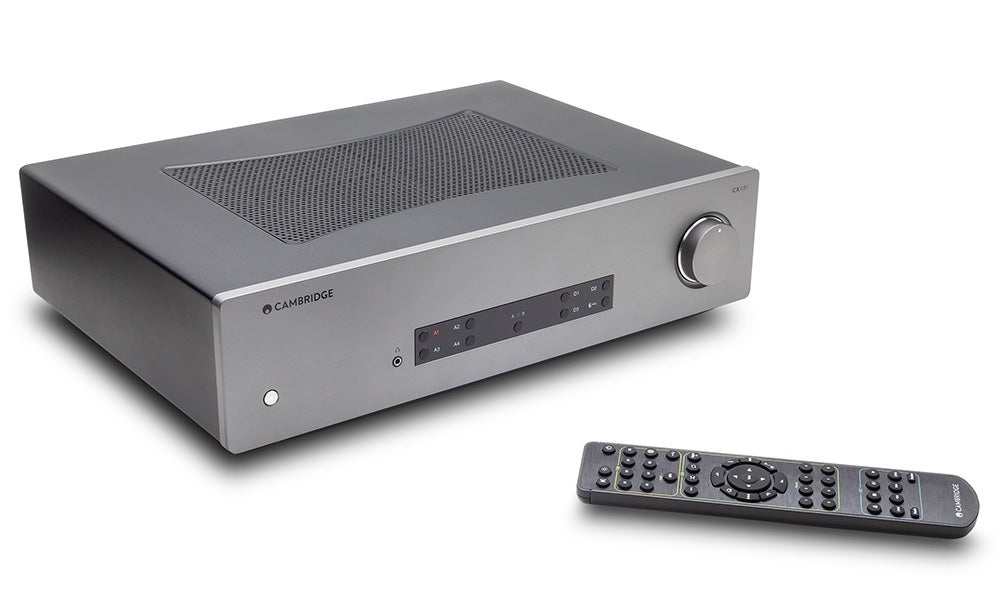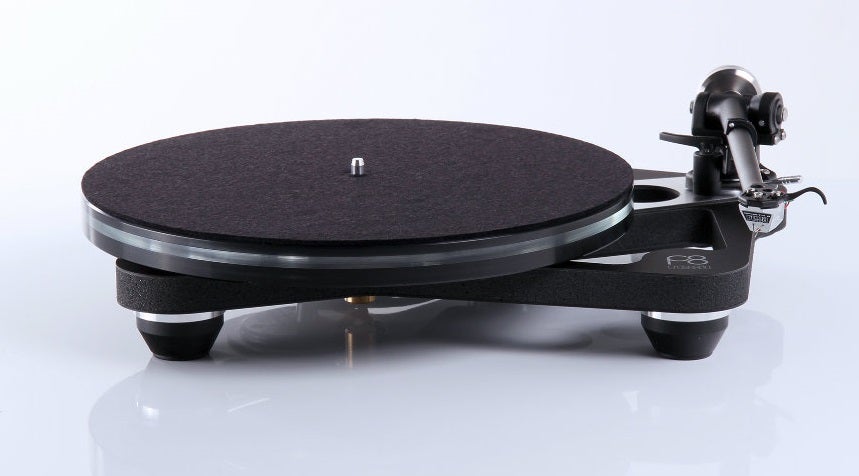Apple HomePod Mini Review
Even better thanks to multiple updates
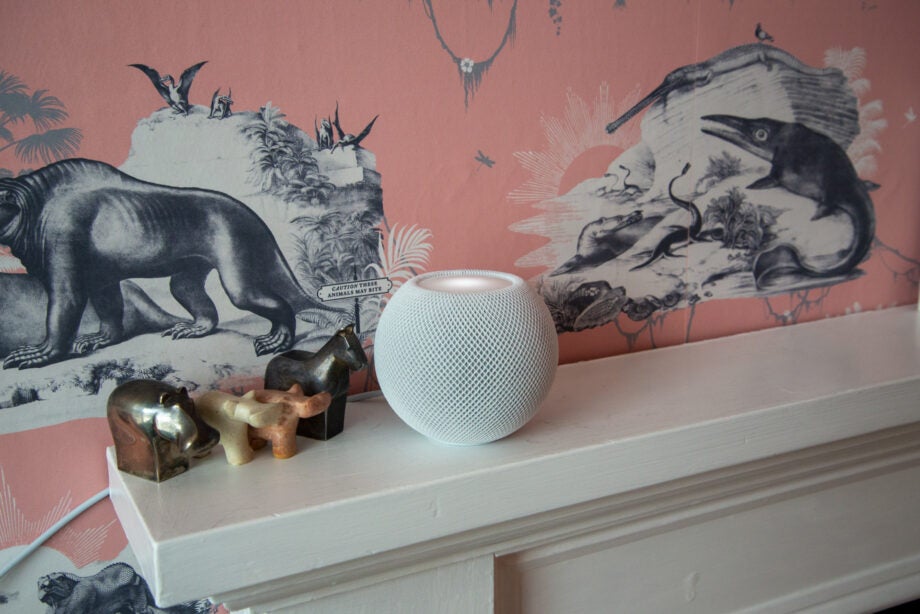

Verdict
A speaker this size just shouldn’t sound as good as the Apple HomePod Mini does. With poise and balance, this speaker can handle everything you throw at it, delivering impressive room-filling volume, too. It’s a decent smart speaker, too, controlling anything in your Home app with ease, while the new Thread hub lets you attach some smart peripherals directly.
This speaker is still a little Apple-centric, and it would be nice to have Spotify better integrated. That said, for the price, this smart speaker is brilliantly priced and sounds better than any of its similarly-priced competition.
Pros
- Sound incredible
- Very small
- Great price
- Decent voice control
Cons
- Captive cable
- Very reliant on Apple services (for now)
Availability
- UKRRP: £99
- USARRP: $99
- EuropeRRP: €109
- CanadaRRP: CA$129
- AustraliaRRP: AU$149
Key Features
- Tight iOS integrationSimple iPhone setup
- Stereo PairCombine two together for even better sound
Introduction
The HomePod Mini is Apple’s dinky smart home speaker that sounds a lot better than many would expect, especially considering the size.
For a time, the HomePod Mini was the sole speaker in Apple’s line-up. That’s all changed now, with the HomePod 2 offering up a much higher-end audio experience at a far higher price.
With built-in support for the Thread smart home networking protocol and Matter, some updated smart speaker features and excellent audio, the HomePod Mini remains an incredible bit of engineering and a great smart speaker for Apple homes.
Design
- Compact build quality
- Captive cable
- Comes in several colours
The HomePod is still one of the best-looking smart speakers, and the HomePod Mini builds on that. You get a similar fabric covering on the outside, with the Mini available in White, Space Grey, Blue, Yellow and Orange – no matter what style of decor you have, you’ll find a HomePod Mini that matches your tastes.
While the HomePod 2 is more elongated, the HomePod Mini is more like a ball, with the top and bottom cut off. It’s similar to the new Amazon Echo (4th Generation), although Apple’s speaker is a lot smaller than this (84 x 98 x 98mm), and is actually even smaller than the Amazon Echo Dot (4th Generation). At 345g, this new HomePod is a lot lighter and easier to place than the original, too.
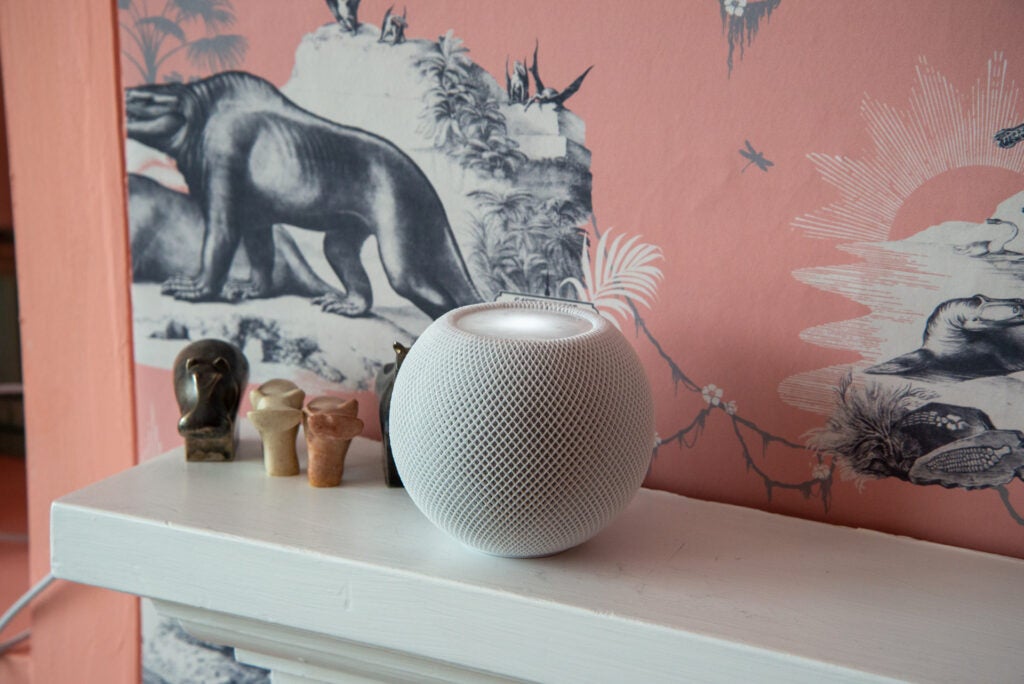
Most importantly, the smaller size means that you can easily place this speaker anywhere you want, as it barely takes up any desk space.
As with the original, there’s still a captive cable (a pain if this is damaged, as you’ll have to send the entire speaker off for repair), although the power end terminates in a USB-C connector, which plugs into Apple’s folding mains plug. It’s a neat design that makes it easy to throw the speaker and power adaptor into a bag to take travelling with you. Apple removed the captive cable with the HomePod 2, so hopefully, we see the same change for the inevitable HomePod Mini 2.
On top, there’s the same light show as the HomePod 2: you get a white light when there’s audio playing, and a multicoloured light show when Siri is activated.
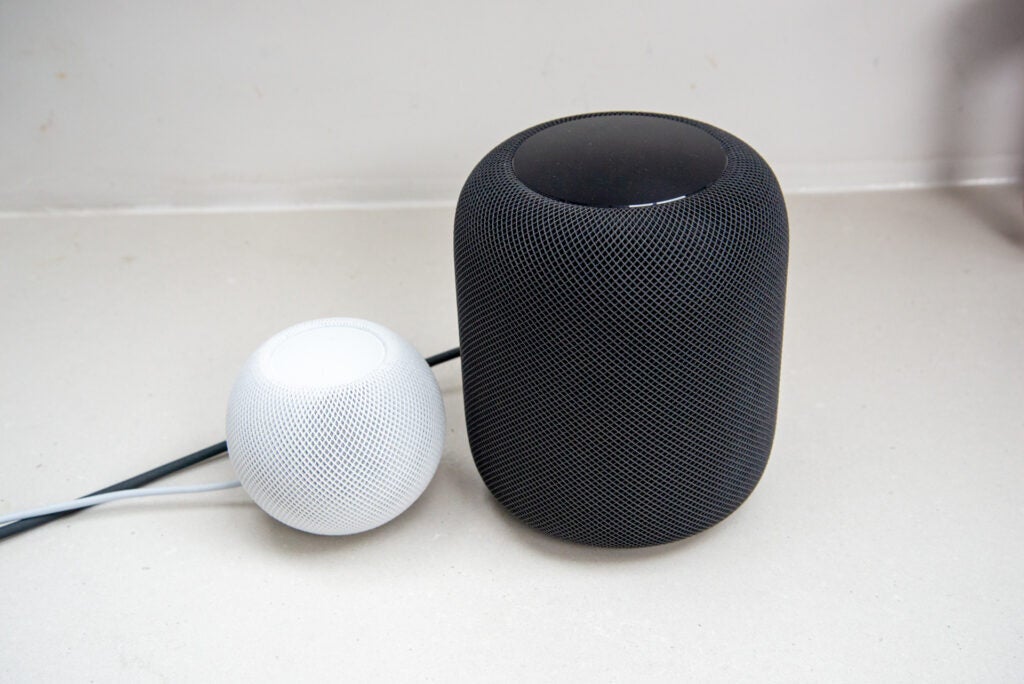
You have to have an iOS device to set this speaker up. If you have, then this is the easiest smart speaker to configure out of any that I’ve tested. Just plug it in, hold your phone close and then tap through the wizard to transfer all the settings you need, including Wi-Fi details and your Apple ID. All-in, it takes just a few minutes to set up and there’s no faffing around with having to log into multiple accounts.
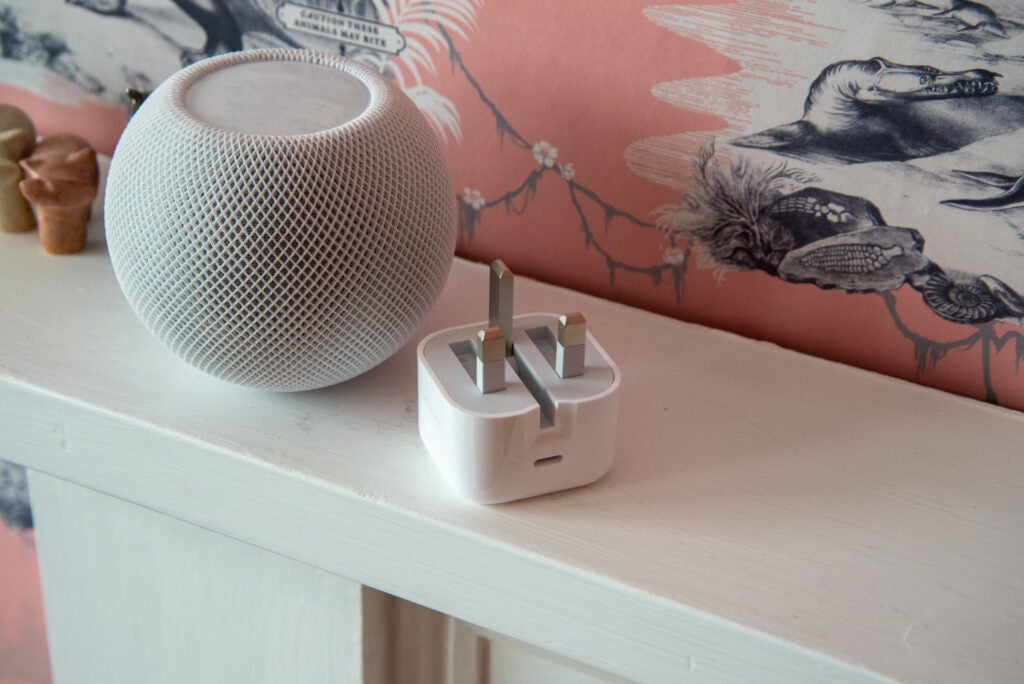
If you’ve got a second HomePod Mini, adding it to the same HomeKit room as the first will ask you if you want to create a stereo pair (more on this later), although you can just as easily add multiple HomePod speakers to multiple rooms.
Features
- Features U1 chip
- Best suited for iOS users
- No physical inputs
Music is going to be one of the main uses of the HomePod, and you can control music directly from the Apple Music app (iOS or macOS). Cleverly, if you’ve got music on a phone that has a U1 chip, you can just hold it near a speaker and music will be transferred; do it again, and music comes back the other way. It’s a brilliant little trick, that quickly lets you keep listening on any device.
Just be careful where you place the HomePod Mini. For initial testing, I had mine on the desk near me, and picking up my phone kept transferring music to and from the speaker.
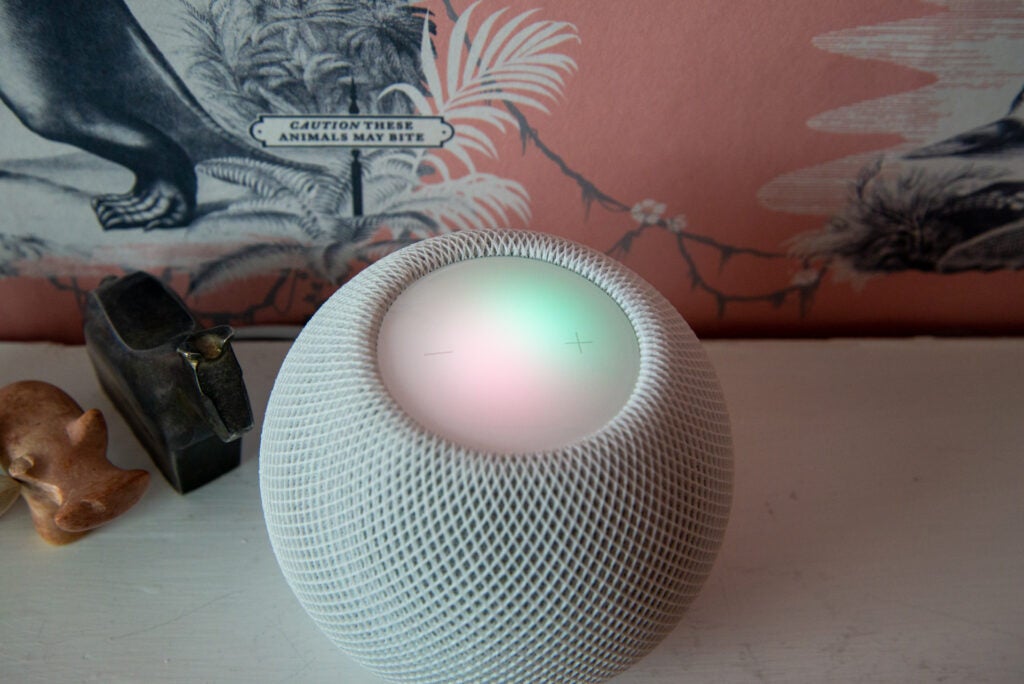
If you have multiple HomePods in the same house, you can play different tracks on them using the same Apple Music account. However, as soon as you start to play on your phone, then this stops working and you either have to upgrade to a Family account or pick where you want to play your music.
Using the AirPlay menu, you can send the same music to multiple speakers, and they don’t have to be Apple ones: any AirPlay 2 compatible speaker can be added into the mix.
There are physical controls on top of the speaker. Tap once to play/pause, tap twice to skip a track and tap three times to skip back. Barely highlighted, you can see ‘+’ and ‘-’ icons for adjusting volume, although it’s all too easy to miss these and play your music.
You can, of course, also use your voice, and the HomePod can play anything that you ask of it. Siri has become much better at understanding what you’re asking for, and you can even tap into recommendations, with the likes of, “Hey Siri, play something I’d like” or, “Hey Siri, play something I can dance to”. Siri will then find tracks based on the type of music that you like.
You can listen to some radio stations, but they’re not all supported. Want a BBC Radio programme? You’re out of luck. Other UK stations are there, but it would be nice to see everything.
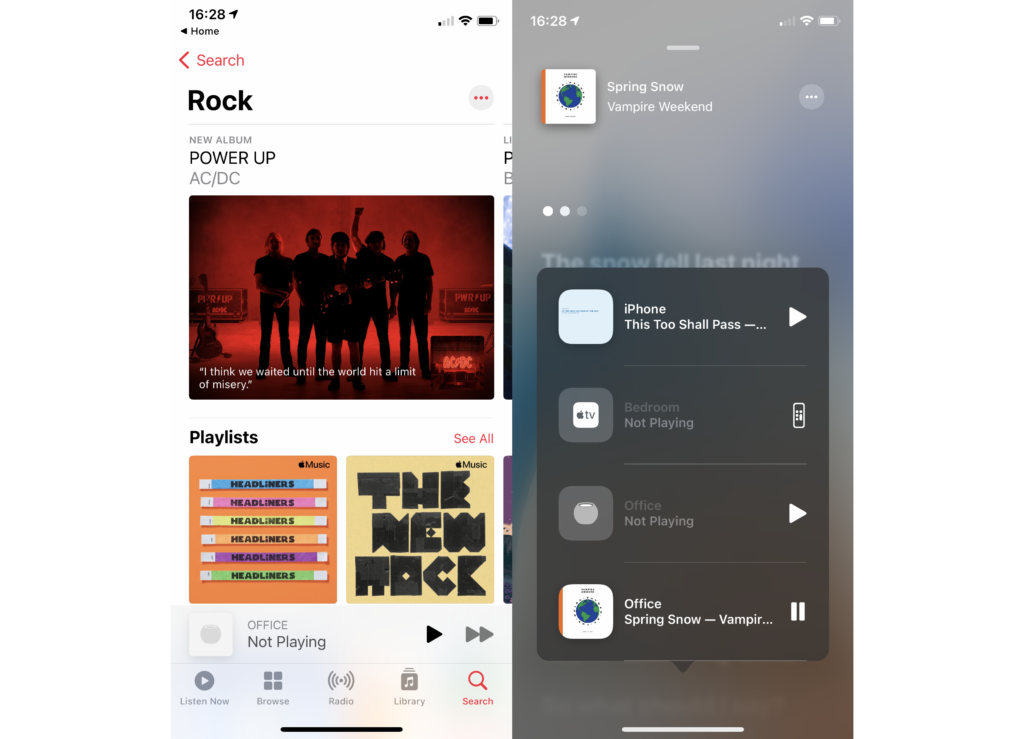
If you want to use a different app, such as Spotify, then you don’t get direct control over your HomePod. Instead, you either have to AirPlay the audio or hold your phone close to transfer music. It’s neat that you can use the latter trick to move music where you want it, although the process of transferring Spotify is slightly slower than with Apple Music.
Apple has improved the underlying tech, too. When I first used a HomePod and sent the music from my phone, switching away from Spotify to another app would send the audio through the HomePod. Now, that doesn’t happen.
There are more limitations using a third-party service, such as Spotify, including that you can only play one track on the device (or group of devices) at a time from the same account. Apple has opened up the HomePod and HomePod Mini to third-party control, with Amazon Music and Pandora supported; I’d love to see Spotify or Tidal make the cut, too.
As with the original, there’s still no audio input for connecting other devices, such as a record deck.
You can use the Apple TV 4K with the HomePod Mini (or a pair), connecting them wirelessly to media streamer to enable Dolby Atmos. And, with the update to the Apple TV 4K (2nd generation), the media streamer is eARC compatible, so audio can be sent from any source on your TV to the HomePod Mini – handy if you’ve got the speakers within range of your TV.
Siri and Smart Home
- Improved Siri performance
- HomeKit support
Siri has improved a lot since the early days, and it’s now pretty good at recognising what you’re saying. Siri mostly responded to us, although you can tap and hold the top of the speaker to manually activate the voice assistant. In some ways, Siri’s replies are better than the ones from Amazon Alexa or Google Assistant: Siri tends to phrase things, such as the local weather report, in a nicer way.
With Apple Maps getting better, Siri can now give better directions and local business search results than Alexa, although the power of Google’s search tools means that its assistant is still slightly in front.
With Siri connected to your Apple ID, it’s capable of getting some personal information, such as adding and reading your calendar. You can add appointments and contacts, but anything considered a personal request, such as getting Siri to tell you what your next event is, require authentication on your phone by default. You can turn this option off in the HomePod settings, but for privacy, your HomePod will only provide you personal results while your iPhone is on the same wireless network.
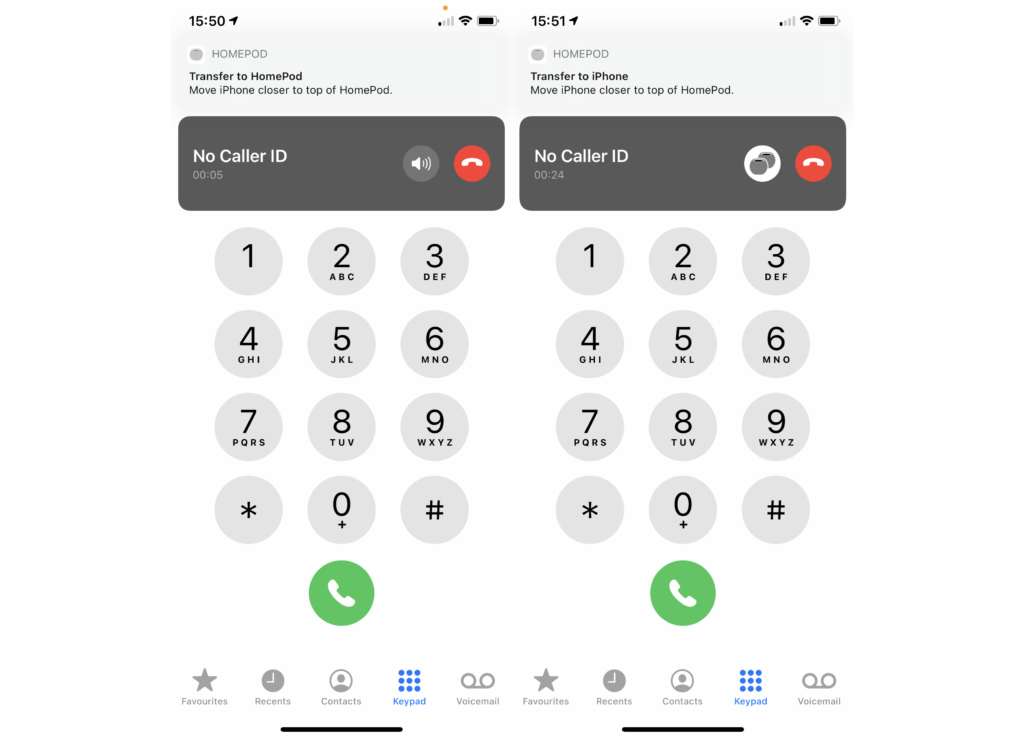
Just as you can do with music, you can also HandOff phone calls too and from the HomePod just by placing your phone near the top of the speaker. It works fast, too.
Of course, you can do all of the things that you’d expect, such as setting reminders, adding notes and setting alarms. As everything ties into Apple’s products, everything is synced across all of your devices.
There are some times when a voice reply isn’t good enough, say when you want to find pictures of something. Here, Apple has a few ways of dealing with things. For some searches, it can pop up a message on your phone, taking you to search results. Try, “Hey Siri, show me pictures of cats” to see it in action. For other requests, such as getting direction information, you’ll get a Siri suggestion in the relevant app.
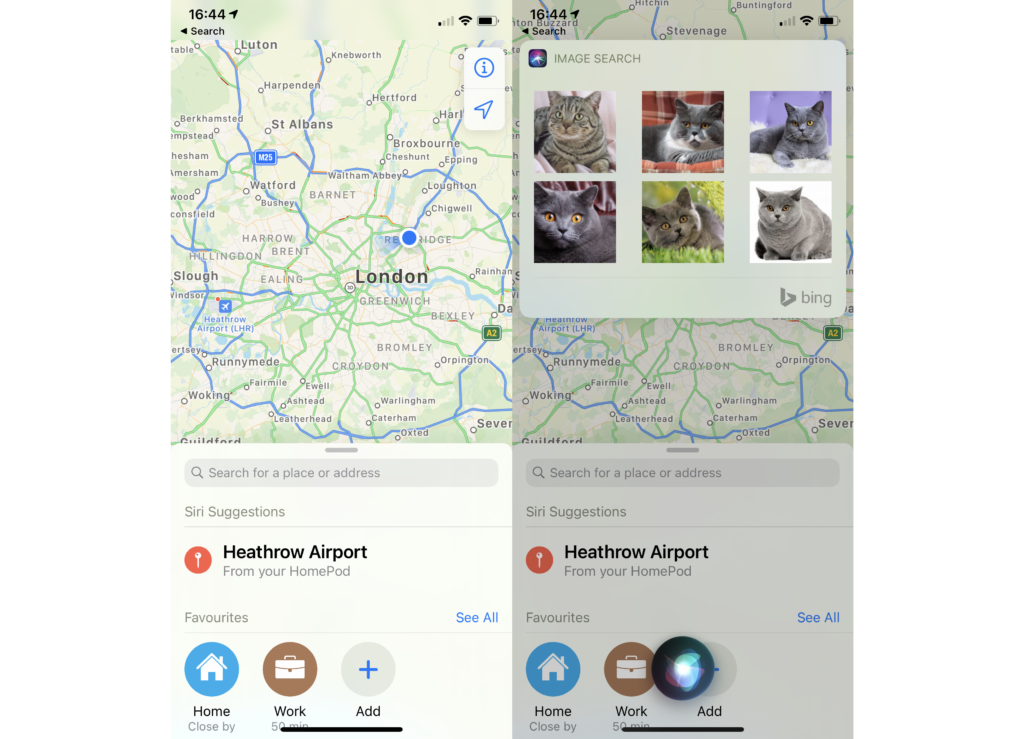
Smart home control has also been improved, since iOS 14. Now, you get default Routine suggestions for added devices. For example, select your HomePod Mini and you can toggle on a Routine that will stop music playing when everyone leaves your home.
HomeKit and, by extension, the Home App have got a lot better. In terms of having a single place for control, for all of your compatible devices, it’s the best product. And, once smart devices are in HomeKit, you can control them via the app or using your voice. Yet, as good as HomeKit is, support still lags far behind the competition and some big names are noticeably not Apple-compliant, including Ring and Nest. If you’re a bit techier, then the free HomeBridge tool, which can run on a Raspberry Pi, is a neat way of adding in additional support.
Using HomeBridge, I have my Ring Alarm turn off and my Arlo cameras change mode, when my Yale smart lock (connected via SmartThings) unlocks.
There’s one new trick that the HomePod Mini has: a Thread hub. Thread is a new low-power mesh networking technology for connecting devices, similar in a way to Zigbee or Z-Wave. With supported devices, you don’t need a hub and can just connect them up and use the Home app to control them, locally or remotely. The Nanoleaf Essentials line was the first to support this technology, but there has been a raft of new devices launched with the connection standard.
As of HomePod version 16.1, the HomePod Mini officially supports Matter, the new interconnection standard that will allow greater interoperability between devices. Matter will see more devices work with the Home app, greatly expanding Apple’s smart home credentials. Another recent tweak is the enabling of the previous dormant temperature and humidity sensors, allowing you build this data into automation.
Intercom is a new tool, to give you broadcast messages. Audio messages are recorded in your voice and automatically played on all AirPods and HomePods, although you can target a single device. Intercom messages are also sent as a notification to iPhones and Apple Watches, where you can tap a button to send a reply back.
You can configure how you want Intercom to work, choosing who gets messages, and whether or not to receive them when you’re out of the house. This level of customisation pushes Intercom above the features available on the Echo and Google Assistant smart speakers.
Sound Quality
- Big sound for a small speaker
- Balanced performance
- Support for stereo pair
Small speakers have historically not been the best. Typically, they suffer from poor bass and they can easily distort. Not so with the HomePod Mini, which is not only better-sounding than the Echo Dot, but better sounding than the Echo.
Apple has put in a full-range driver, two bass radiators and an acoustic waveguide that sits at the bottom of the downward-firing speaker. The system is designed to produce 360-degree sound, not because you’ll have the speaker in the middle of the room, but because we tend to move around. With a traditional speaker, smart or not, directional audio means that there’s a sweet spot you have to sit in to get the best sound; with 360-degree audio, there’s not.
There’s also an S5 chip that monitors the audio output, and finetunes it on the fly, automatically tuning the HomePod Mini for the best-quality output no matter what you’re listening to or where the speaker is placed.
The results are hugely impressive. While larger speakers, such as the Echo or the Sonos One, can produce more bass, through virtue of bigger speakers, what you get with the HomePod is good bass, balanced with the rest of the music.
I’ve talked about the sweet spot in terms of positioning, but it’s fair to say that small speakers generally have a sweet spot for volume: too low and bass is killed; too high and you get distortion. Not so, here, and the HomePod sounds as good through its entire range.
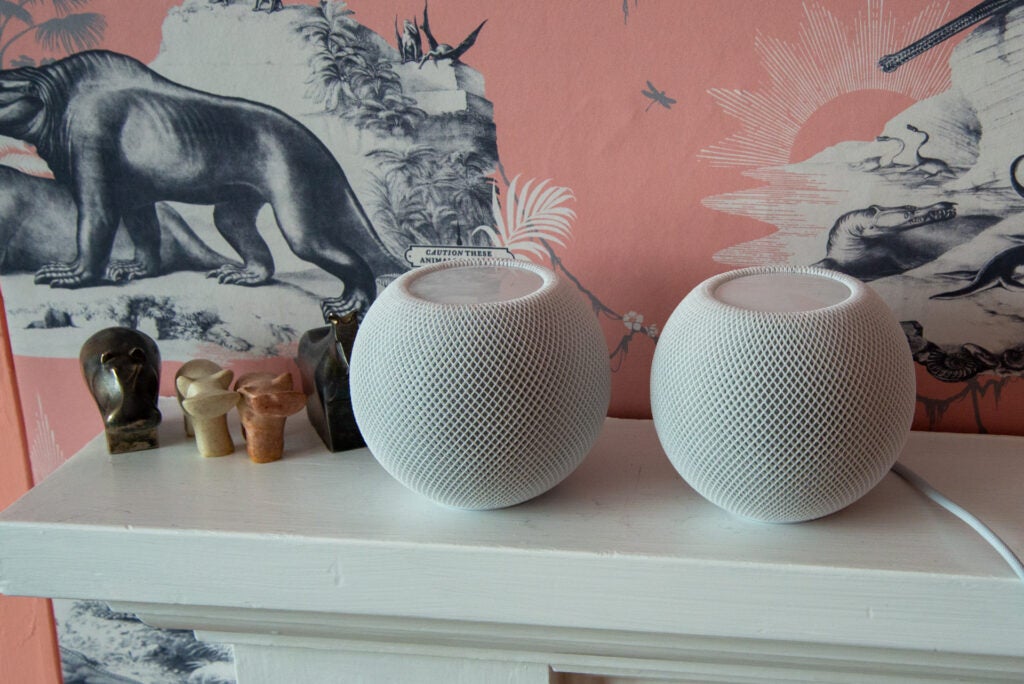
Put on a bass-heavy track, such as Rage Against the Machine’s Bombtrack, and you get that hit of the intro bass riff. You don’t quite get the earth-shaking hit that you do from the larger HomePod, but there’s plenty of presence here.
None of this is at the loss of subtly. Play Hurt by Johnny Cash and the twang of the raw guitar is there. Frank Sinatra’s That’s Life balances the bass line brilliantly against the opening organ, with ol’ Blue Eyes’ vocals shining through.
Volume is impressive, too. At full volume, the HomePod Mini is arguably too loud for most rooms; but it’s still clear.
Sure, you get slightly less detail and range than with the larger HomePod, but you’re not going to be upset with the quality of audio you get here. The HomePod Mini isn’t just impressive for a smaller speaker, it’s impressive full stop.
Put two speakers together into a stereo pair, and the quality is even better. First, you get proper stereo separation. Listen to Pink Floyd’s Wish You Were Here and the opening swirls around you. There is more attack and poise, with the speakers sharing the load, too. You get more detail, cleaner sound and everything sounds more vibrant. It’s really very impressive, and two HomePod Minis cost less than a single Sonos One, but sound better.
Latest deals
Should you buy it?
You want great sound in a small package: The Apple HomePod Mini is a great-sounding and surprisingly affordable wireless smart speaker
You don’t use iOS: It remains a speaker best suited for those in the iOS ecosystem to take advantage of
Final Thoughts
Ultimately, the fact that the Apple HomePod Mini is for Apple households only will immediately cut out anyone running a different operating system. For Apple households, the HomePod Mini is hugely impressive. As a music speaker alone, it’s the best-sounding smart speaker for the price, outdoing all of its closest competition. And, put two together and they outperform much of the more expensive competition, too.
Siri has got better, and the integrations with your iPhone and Mac tie neatly together. Apple products work brilliantly together, and the HomePod mini continues this. With Thread and Matter support available now, the HomePod Mini could be an essential part of your smart home, too.
How we test
We test every wireless speaker we review thoroughly over an extended period of time. We use industry standard tests to compare features properly. We’ll always tell you what we find. We never, ever, accept money to review a product.
Find out more about how we test in our ethics policy.
Tested for more than a week
Compared to similarly priced speakers
Tested with real world use
FAQs
This feature, available through the Home app (tap Home Settings), maintains a consistent volume level for music and podcasts.
You can pair two.

